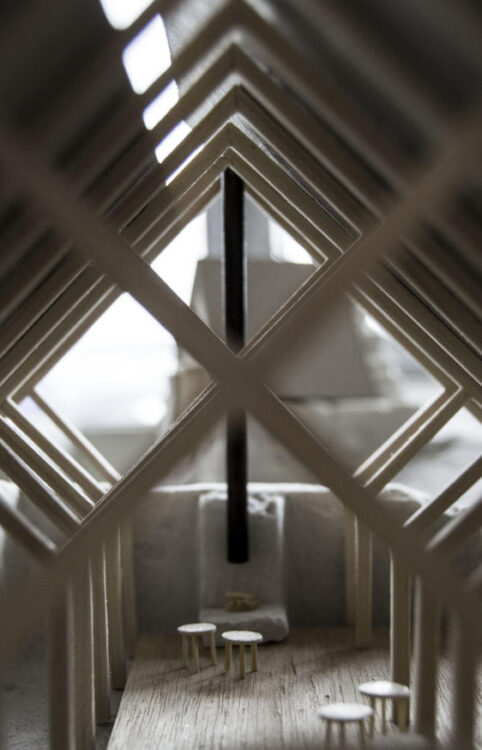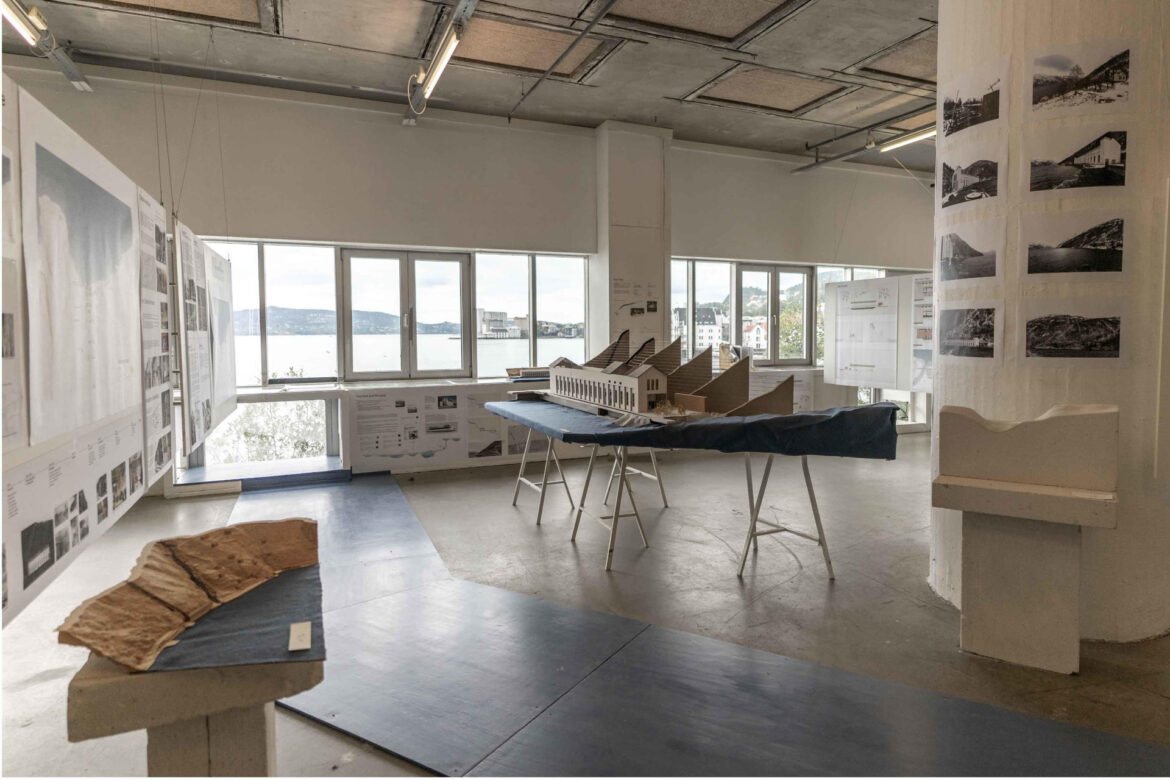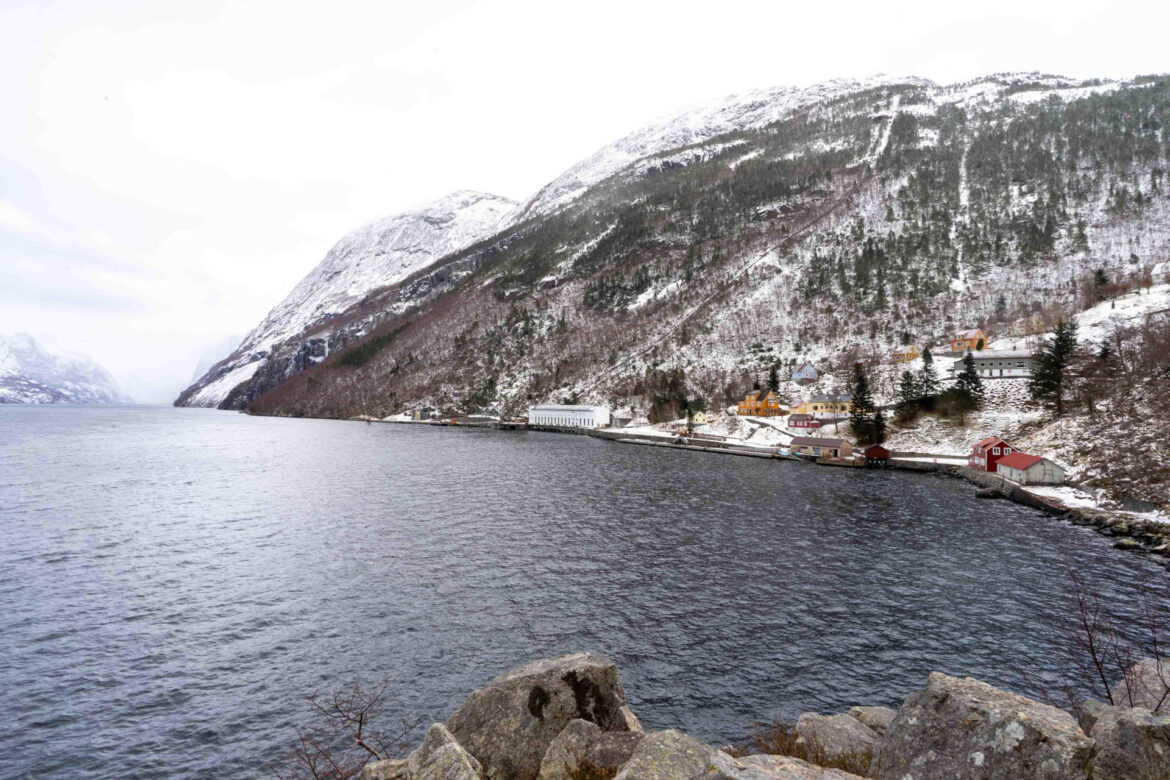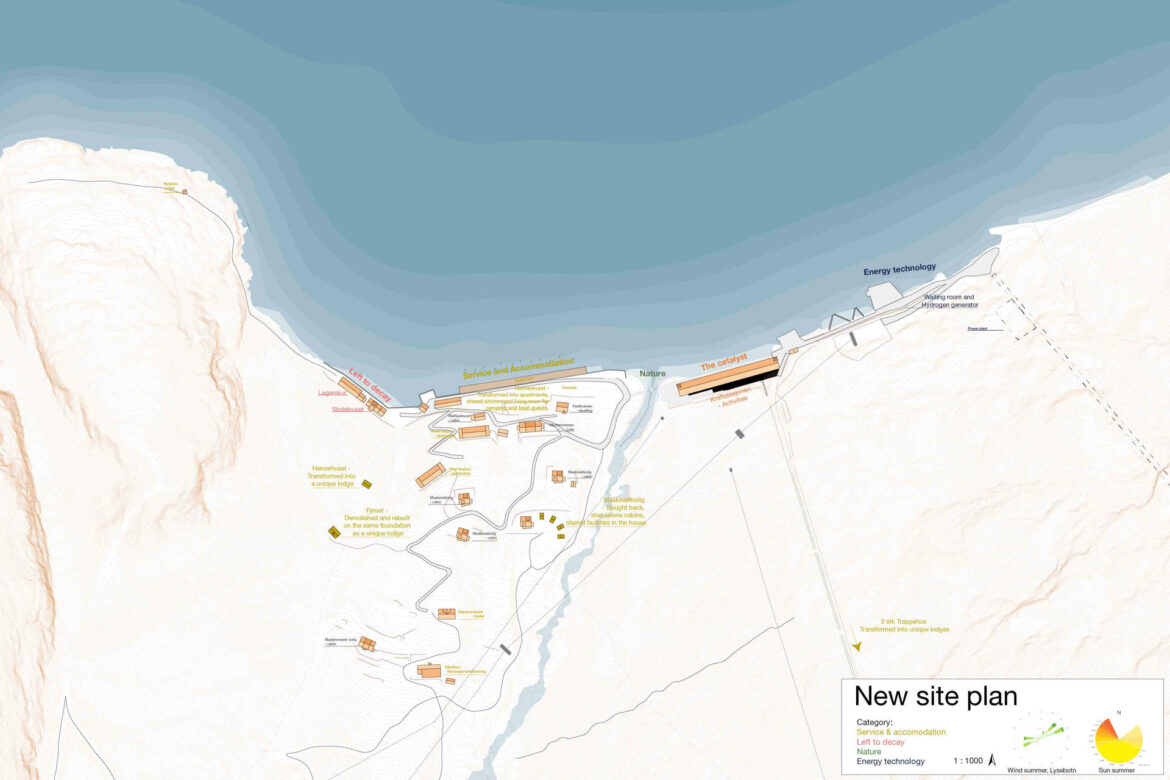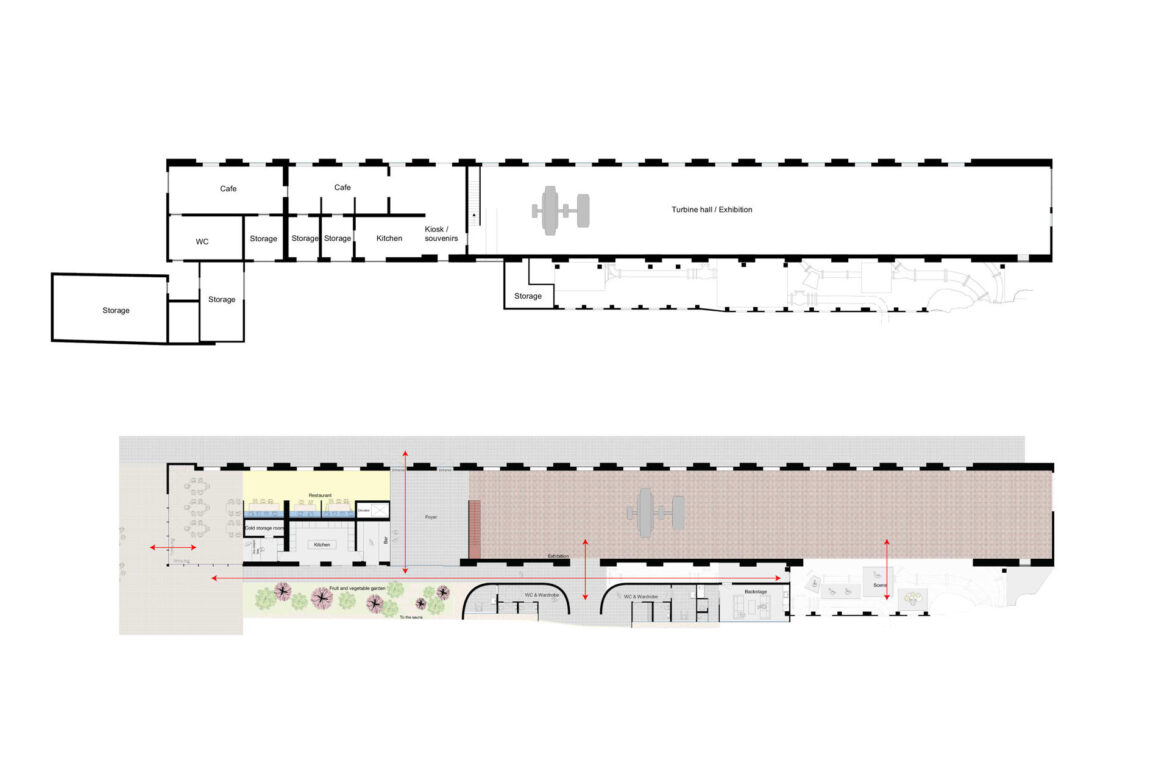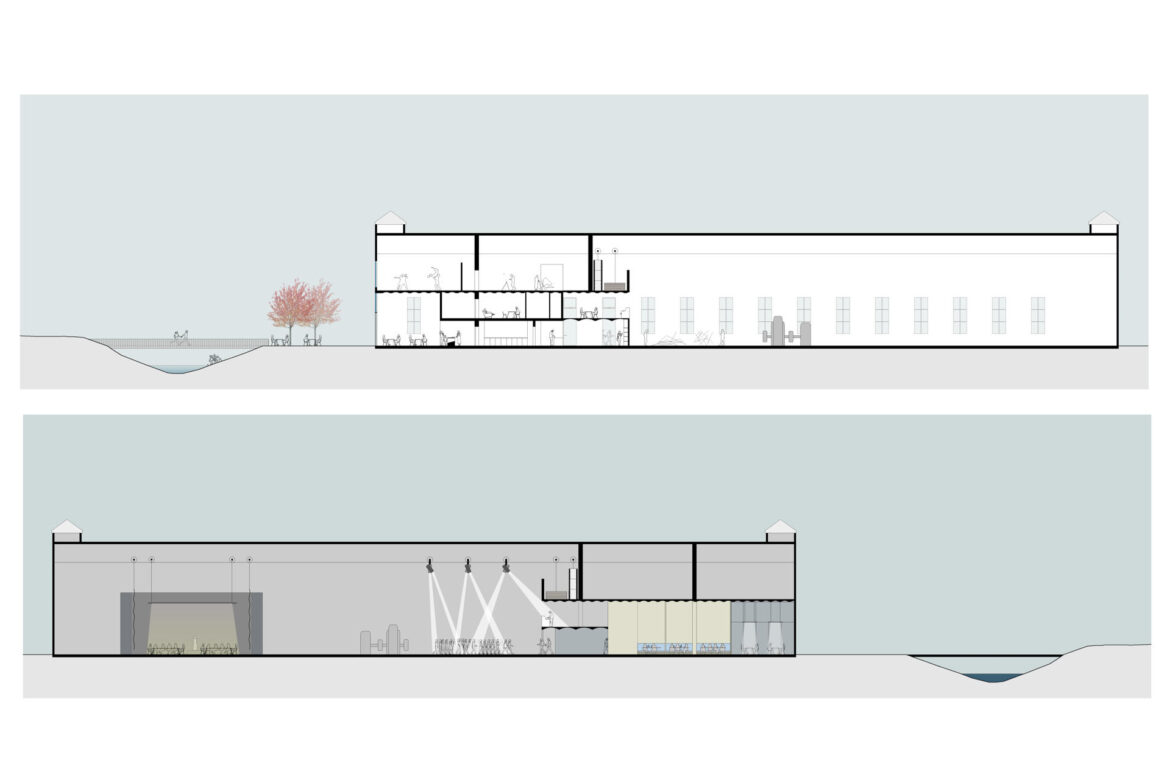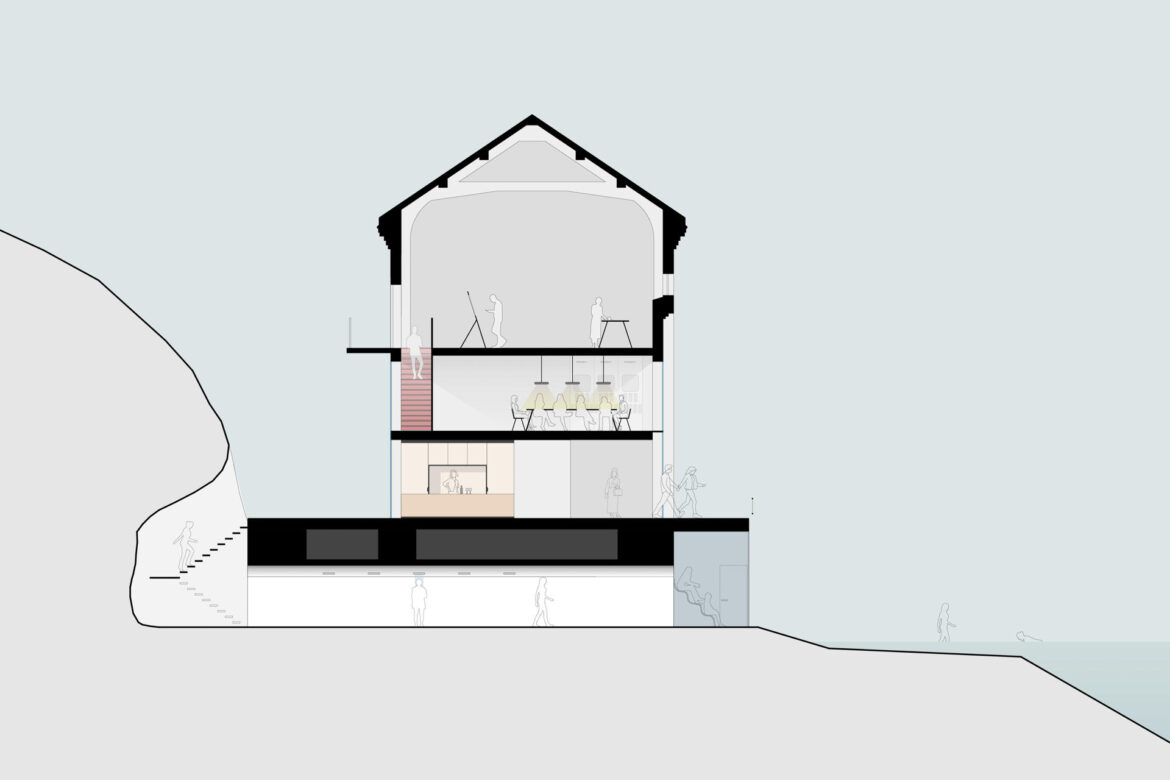Where
Starting in Stavanger, Norway’s energy hub, you board a hydrogen-powered express boat, speeding through Høgsfjorden at 35 knots. The journey offers views of old canning factories, Stavanger’s islands, and idyllic cabin areas. After 20 minutes, you reach Forsand, where the landscape shifts to towering cliffs. You pass the famous Preikestolen, a major attraction in Lysefjorden, before continuing to Flørli. After 45 minutes and 26 nautical miles, you arrive at Flørli, a small settlement in the fjord. Tourism and hydropower dominate here, with both industries significantly shaping the region.
What
Flørli has a rich history. Once a modest settlement with two farms, it transformed in the early 1900s when its river was sold for hydropower. Large pipes and Europe’s longest wooden stairway were constructed, along with a power station that expanded over decades. At its peak, 50 workers lived in Flørli. The power station, crucial for Stavanger’s development, was automated in 1999, eliminating the need for permanent residents. Today, Hessel Haker is Flørli’s only resident, running a summer tourist service. The power station hosts a kiosk, exhibition, and simple accommodations, preserving Flørli’s history and welcoming visitors.
Why is Flørli worth studying?
Flørli’s unique qualities and challenges make it worth studying. The Flørli stairs and surrounding nature attract mountain enthusiasts, but the facilities for visitors are limited and feel disconnected from the natural beauty. The business meeting room lacks light and quality, limiting its appeal for events. While small art exhibitions and concerts have been held, the power station lacks the infrastructure for larger events. Moreover, the unreliable boat service complicates access. As tourism grows, Flørli faces pressure to develop, with plans for a new hotel in the power station. This could change Flørli’s character, making it crucial to balance preservation and development.
How
The diploma project explores various scenarios for how Flørli can be developed. How can the whole region and boat service be strengthened while still preserving nature? After examining different scenarios, cautious measures are proposed to ensure Flørli’s character and identity are preserved.
The old power station is the catalyst for Flørli. Therefore, it has been most natural to delve into this. During the transformation of the power station, several old qualities have resurfaced that had disappeared in later renovations. Some of these qualities have been reintroduced. The somewhat closed-off personality of the power station has been opened up to its surroundings, while some new functions have been added to increase the building’s usability.
The process have been a journey from wanting to make extensive interventions to ending up with a few simple measures. These simple measures aim to address the issues mentioned earlier in this document.
“When I visited the host at Flørli, Hessel Haker, in February, he expressed a desire for me to explore the possibility of making the simplest and most cost-effective interventions, contrasting with the plans for a new hotel. I informed him that, unfortunately, this would not happen, as this was to be my last school project, and I did not want to be constrained by budget and realism. After a long process, during which the interventions continually shrank in line with my growing engagement with Flørli, I ended up with a project where I made quite small changes and additions. Through this process, I have discovered that my role as an architect is not to change as much as possible or necessarily introduce new designs. Instead, it is to facilitate and enhance the qualities that already exist.”
